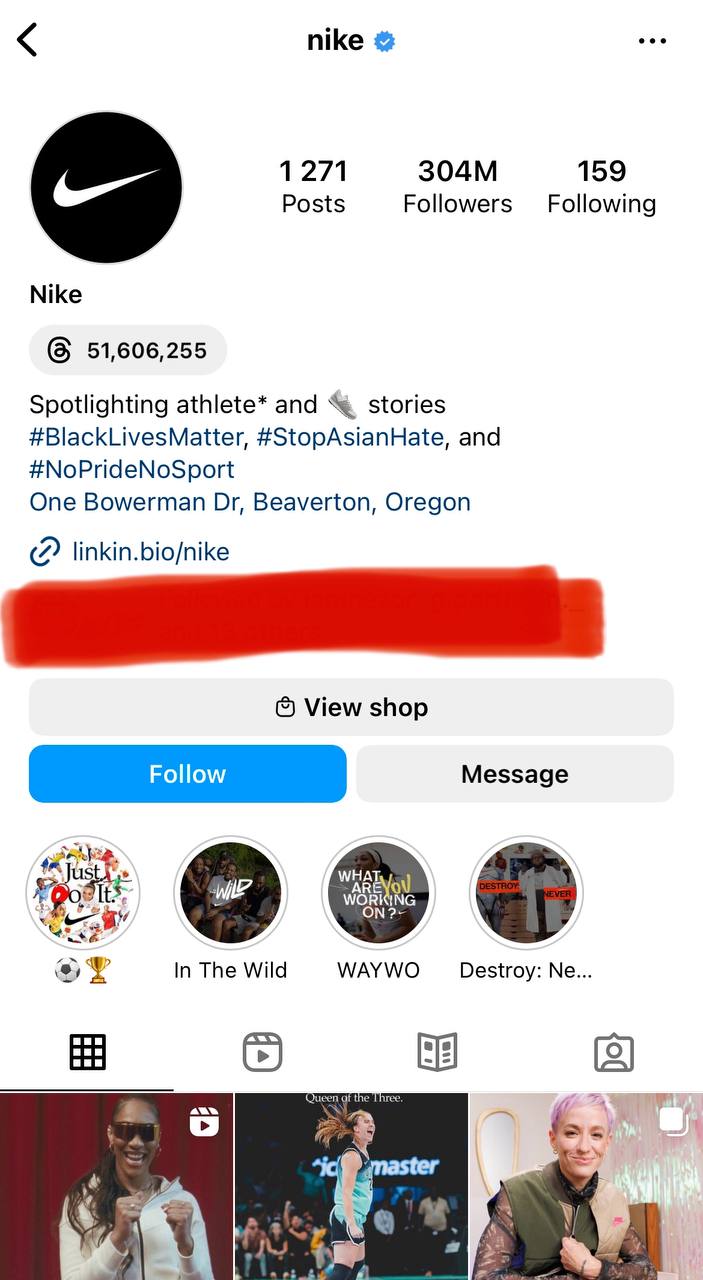Social Media Marketing Strategy: What Is It and How To Create

Social media has become an integral part of the daily activities of millions of people around the world, creating unique opportunities for companies and brands to reach their target audience.
However, using social media as a marketing tool requires not only an active presence but also a strategy. This is where SMM (Social Media Marketing) strategy comes into play, a powerful weapon for achieving business goals in the world of online communications.
Why is an SMM strategy necessary, and can you do without it?
Having active social media accounts on their own can be beneficial for a business, but developing and implementing an SMM (Social Media Marketing) strategy brings significant advantages and makes the use of social media, the work of social media managers, and the marketing department more effective. Let's explore why an SMM strategy is necessary and whether you can do without it:
-
Goal Setting and Orientation: An SMM strategy allows you to define clear goals and direction for your social media activities. It helps you understand what you want to achieve and how you will do it, rather than posting content blindly.
-
Audience and Personalization: With a strategy, you can delve deeper into your target audience, understand their needs, interests, and behavior. This enables you to create content that resonates better with your audience and gain a better understanding of your customers.
-
Content Planning: The strategy determines what type of content to create and when to publish it. This helps maintain a consistent and organized presence on social media platforms.
-
Budget and Resources: An SMM strategy helps allocate budget and resources optimally, taking into account your goals and priorities. It helps avoid wasteful spending and unnecessary expenses.
-
Measuring Success: The strategy includes metrics and Key Performance Indicators (KPIs) that allow you to assess the effectiveness of your social media efforts and make adjustments as needed.
Can You Do Without an SMM Strategy?
While some companies and brands may find success on social media without a clearly defined strategy, this is more of an exception than a rule. It's important to understand that:
-
Without a strategy, you may miss opportunities for growth and increasing the effectiveness of your social media presence.
-
A strategy helps you avoid aimless activity and directs your efforts in the right direction.
-
Without a strategy, it's difficult to measure and analyze results and, consequently, improve your performance.
While it's possible to manage social media without a well-defined SMM strategy, for achieving long-term and sustainable success, as well as maximizing the benefits of social media as a promotional tool, the development and implementation of a strategy are extremely important.
Stages of SMM strategy creation
Research
Let's start with the foundational stage of SMM-strategy development - research. This stage allows you to gather important data and information that will serve as the basis for your strategy. It includes the following steps:
-
Audience Analysis and Target Audience
Audience analysis is a crucial step that helps you better understand both your current audience and the one you want to attract. In this context, it's important to:
- Identify characteristics of your current audience: Age, gender, location, interests, social media behavior, and other factors that define your current audience.
- Define your target audience: Who is your ideal audience? What characteristics and interests should they have? This will help you narrow your focus and create content that appeals to the audience you need.
-
Competitor Analysis
Competitor analysis allows you to understand what other players in your niche or industry are doing on social media and the strategies they are employing. It's important to:
- Identify competitors: Determine the key competitors in your niche or industry who are actively using social media.
- Study their activities: Analyze the platforms they use, the content they create, how they engage with their audience, and the results they achieve.
- Extract lessons: Researching competitors helps you see what works and what doesn't. This can inspire you to create your own successful strategies.
Setting Goals and KPIs (Key Performance Indicators)
Setting goals and KPIs is a key step for measuring the success of your SMM strategy. Goals should be specific, measurable, achievable, relevant, and time-bound (SMART principles). Examples of goals and KPIs may include:
- Goal: Increase the number of subscribers by 20% within 6 months.
KPI: Number of new subscribers per month. - Goal: Improve audience engagement by 15% within a quarter.
KPI: Engagement level (likes, comments, shares). - Goal: Increase the share of active audience by 10% annually.
KPI: Conversion from social media to sales.
These steps and the data from audience and competitor analysis will help you establish a strategic foundation for your SMM strategy and develop more targeted content that resonates with your audience.
Creating the Strategy
At this stage, you are developing specific plans and methods for your SMM (Social Media Marketing) strategy. It includes the following key steps:
-
Identifying Key Communities and Platforms
Determine which social media platforms are the most active and suitable for your target audience and business. Consider various parameters such as age, interests, geographical location, and behavior of your audience. It's advisable not to focus on just one social media platform; 2-3 primary platforms are ideal.
Examples:
- If your target audience consists of youth and young adults, Instagram and TikTok might be the most suitable platforms.
- If you are targeting the B2B market, LinkedIn could be a key platform for you.
- If you need a financially capable modern audience, consider focusing on Telegram.
-
Choosing a Content Strategy
Determine which type of content will be most effective in achieving your goals. This can include:
- Informational content: Sharing news, articles, research, and educational materials.
- Visual content: Using images, videos, and graphics.
- Interactive content: Polls, contests, quizzes, and live streams.
- User-generated content: Customer reviews and personal stories.
- Entertainment content: Memes, short videos, fun situational marketing, and more.
Examples:
- If you sell fashionable clothing, your content strategy may focus on visual content with photos and videos of trendy outfits.
- If you provide consulting services, informational content containing tips and recommendations may be key.
-
Developing a Content Calendar
Create a calendar that specifies what content will be published at specific times. Include days and times for publication as well as topics for each post. This will help you organize your activities and ensure regular and consistent communication with your audience.
Example:
- Your content calendar may include "Monday informational articles," "Wednesday Q&A sessions," "Friday tips," and so on.
-
Establishing a Budget and Resources
Determine the available financial resources for your SMM strategy. This includes a budget for advertising, hiring employees or freelancers, and purchasing necessary equipment or software.
Example:
- If you have a limited budget, start with an organic strategy by creating content yourself and using free social media management tools. As your business grows, you can allocate more funds for advertising and hire professionals.
Implementation
At this stage, Social Media Managers begin implementing the agreed SMM strategy, turning your plans into action. This stage includes the following key steps:
-
Creating and Optimizing Social Media Profiles
-
Profile Creation: If you don't already have profiles on the selected social platforms, create them following your brand's style and the platform's recommendations.
-
Profile Optimization: Ensure that your profiles are complete and up-to-date. Include your logo, banner, a brief brand description, and contact information. This makes it easier for the audience to find and recognize you.
-
-
Launching Advertising Campaigns
-
Setting Advertising Goals: Determine what you want to achieve through advertising. It could be increasing subscribers, sales, brand awareness, and more.
-
Audience Targeting: Define the audience for your ads. Use parameters such as gender, age, interests, and geographic location to pinpoint your target audience.
-
Creative Development: Create creative and engaging ads that align with your goals. Include visual content, text, and, if necessary, links to your website.
-
Campaign Launch: Start advertising campaigns according to the budget and schedule you established in the previous stage.
-
Monitoring and Optimization: Regularly track the results of your advertising campaigns and optimize them based on performance data. This helps maximize the effectiveness of your ads.
-
-
Engaging with the Audience
-
Active Interaction: Respond to comments, reviews, and messages from your audience. Be attentive and responsive to feedback.
-
Creating Engaging Content: Publish content that encourages discussion and audience engagement. This could include polls, audience questions, contests, and other interactive formats.
-
Monitoring and Analysis: Monitor your audience's reaction to your content and respond to changes in their interests and needs.
-
Building a Community: Aim to create a community around your brand where users can interact with each other and share experiences.
-
Monitoring and analysis
At this stage, you evaluate and analyze the results of your SMM (Social Media Marketing) strategy to understand its effectiveness and make necessary adjustments. This stage includes the following key steps:
-
Evaluating Strategy Effectiveness
-
Comparing with Goals: Compare the achieved results with the goals and KPIs defined in the earlier stages. Determine whether you have successfully achieved your objectives.
-
ROI Analysis: Evaluate the return on investment (ROI) in social media. Compare the costs with the revenue generated from these channels.
-
Feedback Analysis: Analyze feedback from your audience. Take into account comments, reviews, and user impressions.
-
Competitor Comparison: Compare your results with those of competitors on social media. This helps identify your market position.
-
-
Metrics and Reporting Analysis
-
Metrics and KPIs: Assess key metrics and KPIs that were defined during the strategy creation stage. These may include the number of subscribers, engagement rate, conversion, and others.
-
Traffic Analysis: Use analytical tools such as Google Analytics or built-in social media analytics to track and analyze incoming traffic to your website.
-
Reporting: Create regular performance reports, including charts, graphs, and numerical data, to present the results to your stakeholders.
-
-
Making Adjustments to the Strategy
-
Data-Driven Changes: Use the data obtained from analysis to determine which aspects of your strategy are performing well and where there are issues or room for improvement.
-
Content Optimization: Make changes to your content and schedule based on the analysis of results. This may include altering the content type, increasing efforts in specific directions, or revising the budget for more effective advertising.
-
Continuous Monitoring: Continue monitoring performance and stay vigilant about changes in the audience and the market to ensure your strategy remains relevant. In addition to content and engagement metrics, many teams now utilize employee monitoring software to assess how effectively team members are contributing to campaign tasks—especially in remote or hybrid work environments.
-
Adapting to Changes: Social media platforms are constantly evolving, so be prepared to adapt your strategy to new trends and platforms. For example, consider the introduction of features like Reels and Shorts.
-
Tools for creating SMM strategy
Analytics and monitoring tools
First and foremost, we need detailed analytics data. To achieve this, you can utilize both internal analytics and external services:
-
Popsters: A powerful service for analyzing and monitoring any social media page. It can be used for analyzing your own profiles, as well as competitors and the niche in general. This tool can be beneficial for small businesses and large corporations alike to effectively manage their social media presence. An additional advantage is the ability to export ready-made reports in PDF, Excel, and PPTX formats.
-
Google Analytics: For analyzing traffic from social media to your website and evaluating conversion effectiveness.
-
Facebook Analytics: For monitoring performance on Facebook and Instagram, analyzing the audience, and evaluating ad campaigns.
-
Twitter Analytics: For analyzing tweets, audience engagement, and monitoring hashtags.
-
Instagram Insights: Built-in Instagram analytics tool for assessing account and content performance.
-
Hootsuite: A platform for social media management that provides analytics and publishing tools.
-
Buffer: A tool for scheduling and analyzing social media posts.
Services for managing content plans and publications:
-
Google Services (Google Docs, Google Sheets, Google Calendar): These tools help create publication schedules, set deadlines for content plans, and create and manage tables and data.
-
Monday com: A project and task management tool that can be used to create content plans, track tasks and deadlines, and facilitate teamwork.
-
CoSchedule: A platform for creating and managing content calendars and social media campaigns.
-
Trello: Allows you to create task cards with descriptions and deadlines, organize them on boards, and move them between stages of completion.
Services for creating creative content:
-
Canva: A tool for creating graphics, banners, and social media designs.
-
Adobe Creative Cloud: Includes programs like Photoshop and Illustrator for professional content design.
-
Unsplash and Pexels: For finding high-quality and free images for use in content.
-
Animoto: Helps create videos and animations for social media.
-
Canva Video, CapCut, InShot: Apps for creating and editing videos and animations.
-
Audioblocks and Soundstripe: For finding and using music and sound effects in videos.
-
Grammarly: Helps check grammar and text structure in posts and messages.
-
Crello: A platform for creating graphics and animations for social media.
These tools can significantly simplify the process of developing and managing your SMM strategy, allowing you to create high-quality content, analyze results, and effectively engage with your audience.
Examples of successful SMM strategies
Case studies: which companies have achieved success in SMM
Red Bull
Red Bull is known for its skillful SMM strategy, which is built on creating unique and engaging content. They regularly publish videos featuring extreme sports and activities associated with the brand.
Example: The "Stratos" campaign featuring Felix Baumgartner's jump from the stratosphere was an epic event that generated a lot of buzz on social media. It not only showcased the brand but also sparked tremendous interest and discussions.
Oreo
Oreo is renowned for its creativity in social media. They create interesting and visually appealing content that engages the audience. As part of their SMM strategy, they ran the "#OreoHorrorStories" campaign for Halloween, where they crafted spooky stories using Oreo cookies.
Their famous tweet "You can still dunk in the dark" during a power outage at the Super Bowl created a storm of reactions and served as an example of how to quickly respond to current events.
Nike
Nike actively engages with the audience on social media and supports various social movements. They create inspirational content that reinforces their "Just Do It" mission.
The "Dream Crazy" campaign featuring Colin Kaepernick went viral and raised an important question about social justice. This campaign demonstrated how a brand can express its stance and engage the audience.
Expert Tips
- Be Authentic: Social media users value authenticity. Strive to create content that reflects the true identity of your brand.
- Create Engaging Content: Content should be interesting and engaging. Ask questions, conduct polls, organize contests, and encourage comments and discussions.
- Learn from Mistakes: If something isn't working, don't be afraid to change your strategy. Monitor results and analyze what can be improved.
- Be Active and Responsive: Respond to comments and audience feedback. Answer questions, express gratitude for reviews, and demonstrate care for your audience.
Mistakes to avoid when creating an SMM strategy
A. Inadequate Research and Understanding of the Audience:
- Problem: Not knowing your target audience can lead to creating content that is irrelevant or uninteresting to your followers.
- Solution: Conduct research on your audience, understand their interests, needs, and preferences. Create content that resonates with your audience.
B. Lack of Clear Goals and KPIs (Key Performance Indicators):
- Problem: Without clear goals and Key Performance Indicators (KPIs), you won't be able to measure the success of your strategy and assess its effectiveness.
- Solution: Define specific, measurable, and achievable goals for your SMM strategy. Determine KPIs that will help you track the achievement of these goals.
C. Ignoring Trends and Changes in Social Media:
- Problem: Social media platforms are constantly evolving, and ignoring new opportunities and trends can lead to losing competitiveness.
- Solution: Stay updated on the latest changes and trends in social media. Adapt to new opportunities and incorporate them into your strategy.
D. Lack of Monitoring and Analysis:
- Problem: Without regular monitoring and analysis of results, you won't be able to optimize your strategy and learn from your mistakes.
- Solution: Implement a monitoring and analysis system that allows you to track the performance and effectiveness of your strategy. Use data to make adjustments and improve your plans.
Conclusion
In the world of modern business and marketing, a social media marketing (SMM) strategy plays a pivotal role in achieving success on social networks. It is a powerful tool for establishing and maintaining a connection with your audience, promoting your brand, and achieving business goals. The realm of social media is dynamic and competitive, and an SMM strategy allows your company not only to stand out but also to achieve noticeable results.
Key aspects of a successful SMM strategy include thorough audience research, defining clear goals and KPIs, as well as continuously updating and adapting to trends and changes in social networks. An SMM strategy requires constant fine-tuning and optimization to remain relevant and effective.
Explore, define, create, and measure. Step confidently into the world of social media where opportunities for your brand are boundless. Don't forget to analyze and learn from your mistakes, as this is the only way to build a long-lasting and successful legacy for your company.
Useful articles on a similar topic:
- How to get rid of fake followers on Instagram;
- How to do audience analysis on Facebook in more detail;
- Target audience profile: what it is, how to find and analyze yours;
- Easy ways how to get more followers on X (Twitter).
Try Popsters Trial plan to get content activity statistics of any pages for a next 7 days for free
Try for free



















